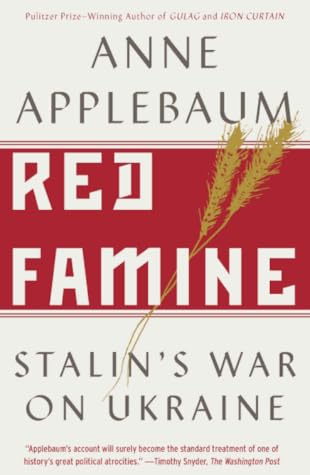More on this book
Community
Kindle Notes & Highlights
There is almost no commemoration of either the Ukrainian or the wider Soviet famine in Russia and very little public debate. To the extent that it is mentioned at all, it is usually part of an argument that clearly denies any particular Ukrainian suffering.
The problem worsened in the spring of 2014, when the Russian government produced a caricature “genocide” argument to justify its own behaviour. During the Russian invasions of Crimea and eastern Ukraine, Russian-backed separatists and Russian politicians both said that their illegal interventions were a “defence against genocide”—meaning the “cultural genocide” that “Ukrainian Nazis” were supposedly carrying out against Russian speakers in Ukraine. As the conflict between Russia and Ukraine intensified, attacks on the history and historiography also worsened. In August 2015, Russian-backed
...more
By 2016 the arguments had come full circle. The post-Soviet Russian state was once again in full denial: the Holodomor did not happen, and only “Nazis” would claim that it did. All these arguments muddied the application of the word “genocide” so successfully that to use it in any Russian or Ukrainian context has become wearyingly controversial. People feel exhausted by the debate—which was, perhaps, the point of the Russian assault on the historiography of the famine in the first place.
Thanks to the USSR’s systematic destruction of Ukrainian culture and memory, many Russians do not treat Ukraine as a separate nation with a separate history. Many Europeans are only dimly aware that Ukraine exists at all. Ukrainians themselves have mixed and confused loyalties.
revolutionaries.” In 2014, Russian state media described Russian special forces carrying out the invasion of Crimea and eastern Ukraine as “separatist patriots” fighting “fascists” and “Nazis” from Kyiv. An extraordinary disinformation campaign, complete with fake stories—that Ukrainian nationalists had crucified a baby, for example—and fake photographs followed, not only inside Russia but on Russian state-sponsored media around the world. Although far more sophisticated than anything Stalin could have devised in an era before electronic media, the spirit of that disinformation campaign was
...more
As in 1932, when Stalin told Kaganovich that “losing” Ukraine was his greatest worry, the current Russian government also believes that a sovereign, democratic, stable Ukraine, tied to the rest of Europe by links of culture and trade, is a threat to the interests of Russia’s leaders. After all, if Ukraine becomes too European—if it achieves anything resembling successful integration into the West—then Russians might ask, why not us? The Ukrainian street revolution of 2014 represented the Russian leadership’s worst nightmare: young people calling for the rule of law, denouncing corruption and
...more


